Me, My Selfie, and I: A Day at the Met with Telly Leung

The Temple of Dendur in The Sackler Wing—one of Telly Leung's favorite places in the Met. All images courtesy of the author
«May is Asian-Pacific American Heritage month, and my dear friends at the Met have asked me to be one of the many performers taking part in their upcoming Asian-Pacific American Heritage Month Celebration on Friday, May 22.»
As a native New Yorker, the Met is a very special place to me. New York is an amazing city, and I'm very thankful to have grown up a "city kid" who took advantage of all the culture and arts available to me. I often wonder if I would be a Broadway performer today if I wasn't only a token ride away from the many museums and theaters throughout the city. (Yes, I said "tokens." Remember subway tokens? I think I just dated myself!)
New York, however, is sometimes not so amazing. It can be noisy, hectic, dirty, stressful, and downright difficult. Sometimes, New York is the city that chews you up and spits you out for breakfast. Every New Yorker knows what I'm talking about—this never-ending love-hate relationship with the greatest city on earth.
I went to Stuyvesant High School, which is a pretty tough, competitive environment academically. It was very high on stress. So as an escape from all the stress, I would take the subway to the Met and take a few moments in my favorite quiet spot, The Temple of Dendur, and escape from it all. That's the beauty of the Met. One minute, you are in the hustle and bustle of New York, but the minute you step into the Met, you are transported from ancient Egypt to Africa to Asia to nineteenth-century France as you move from room to room and from exhibit to exhibit.
Fast-forward to today—May 1—the first day of Asian-Pacific American Heritage month. I was having one of those stressful New York days; I was feeling beaten down by "show biz" and felt uninspired as an artist, which happens from time to time. (After all, actors are constantly putting themselves out there for critique, and they are constantly told "no" at auditions or reviewed poorly for their latest performance.) So I decided to take a long-overdue trip to the Met and escape from it all. But, this time, I thought I'd take you all along for the ride and document my trip with some pictures and selfies.
First, I took a stroll through Central Park. The museum is on the Upper East Side, but I live on the west side of town. I forgot that this is the season of cherry blossoms, so once I saw these amazing trees I could already tell that this was going to be a great afternoon escape.

After a ten-minute walk, I finally arrived at the Met. Let the adventure begin!
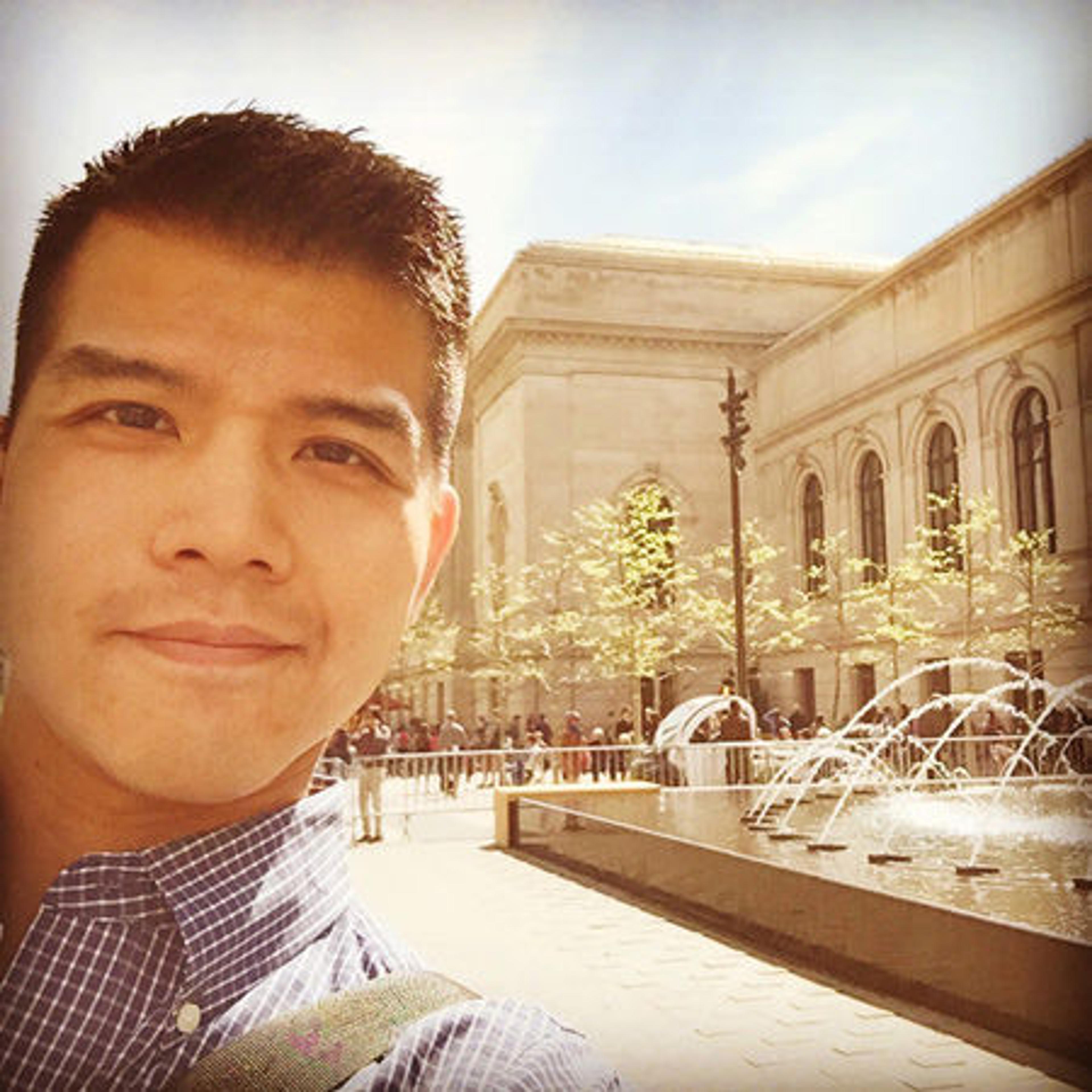
I entered the main entrance and took my first right-hand turn. I was immediately transported to another time and place—ancient Egypt.

I made my way through the many mummies and displays of hieroglyphics to my favorite space, The Temple of Dendur in The Sackler Wing.

There is a quiet sense of awe when you enter this gallery housing the remains of this great temple, which was a gift from the government of Egypt to the United States. Seeing something so archaic, preserved so beautifully and incredibly illuminated with natural light, really gives perspective to all of my daily worries. It takes me back to a simpler time. I joined the many people who just sat next to the water, staring at the Temple, and became lost in all its magnificence.
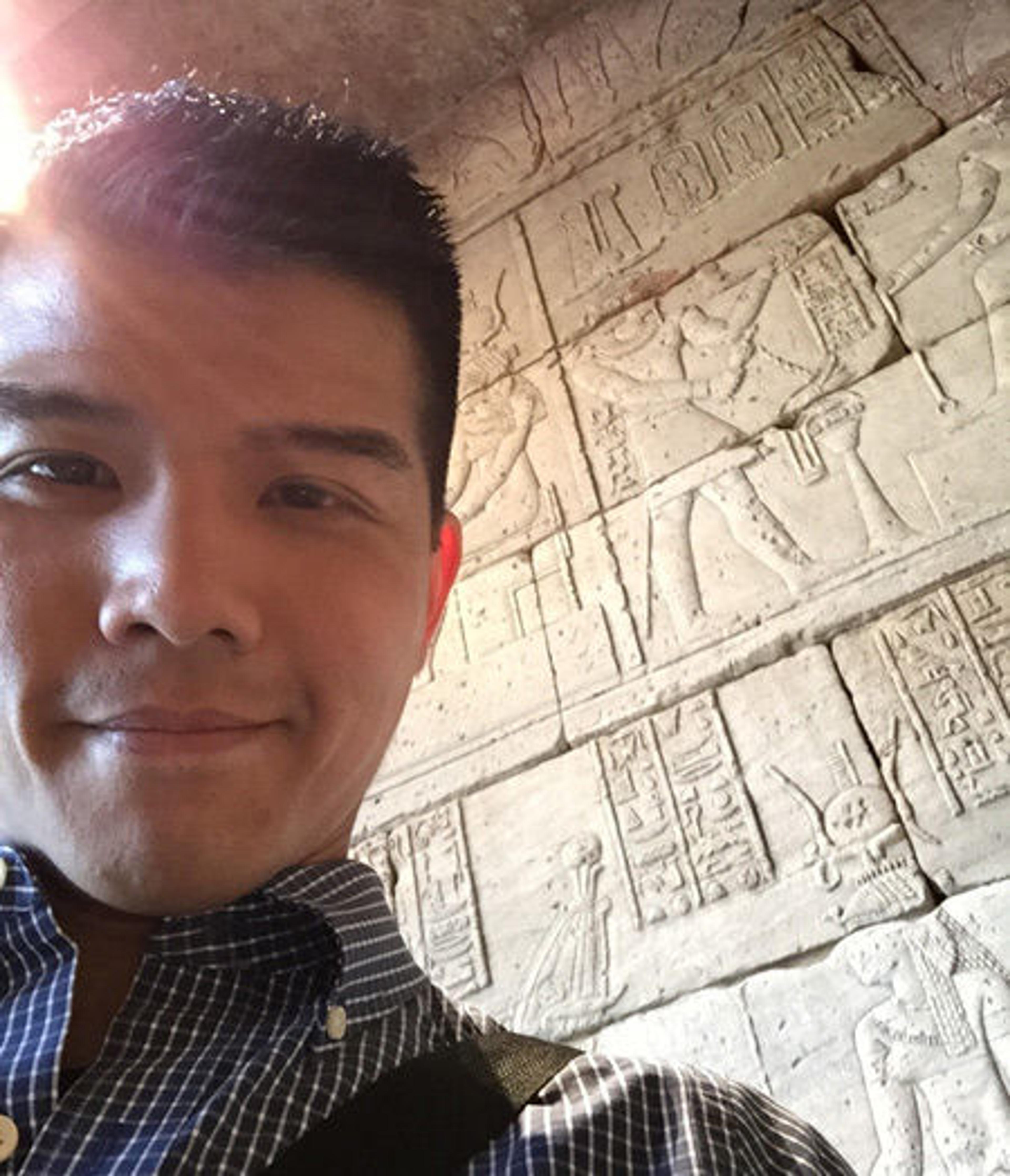
As I entered the Temple, I snapped this selfie and felt an enormous sense of gratitude—to have a place like the Met in New York City and to be so close and connected to something that existed so many centuries ago. It makes one feel small, but I mean that in a good way. I encourage all readers to visit this gallery and see if you get that feeling too.
I left the Temple and decided to spend the rest of my afternoon just roaming around, with no plan and no agenda whatsoever. I wanted to get lost within the Met. I went upstairs, and the first thing that caught my eye was this gorgeous Ming dynasty vase. Instantly, I was transported from Egypt to China.
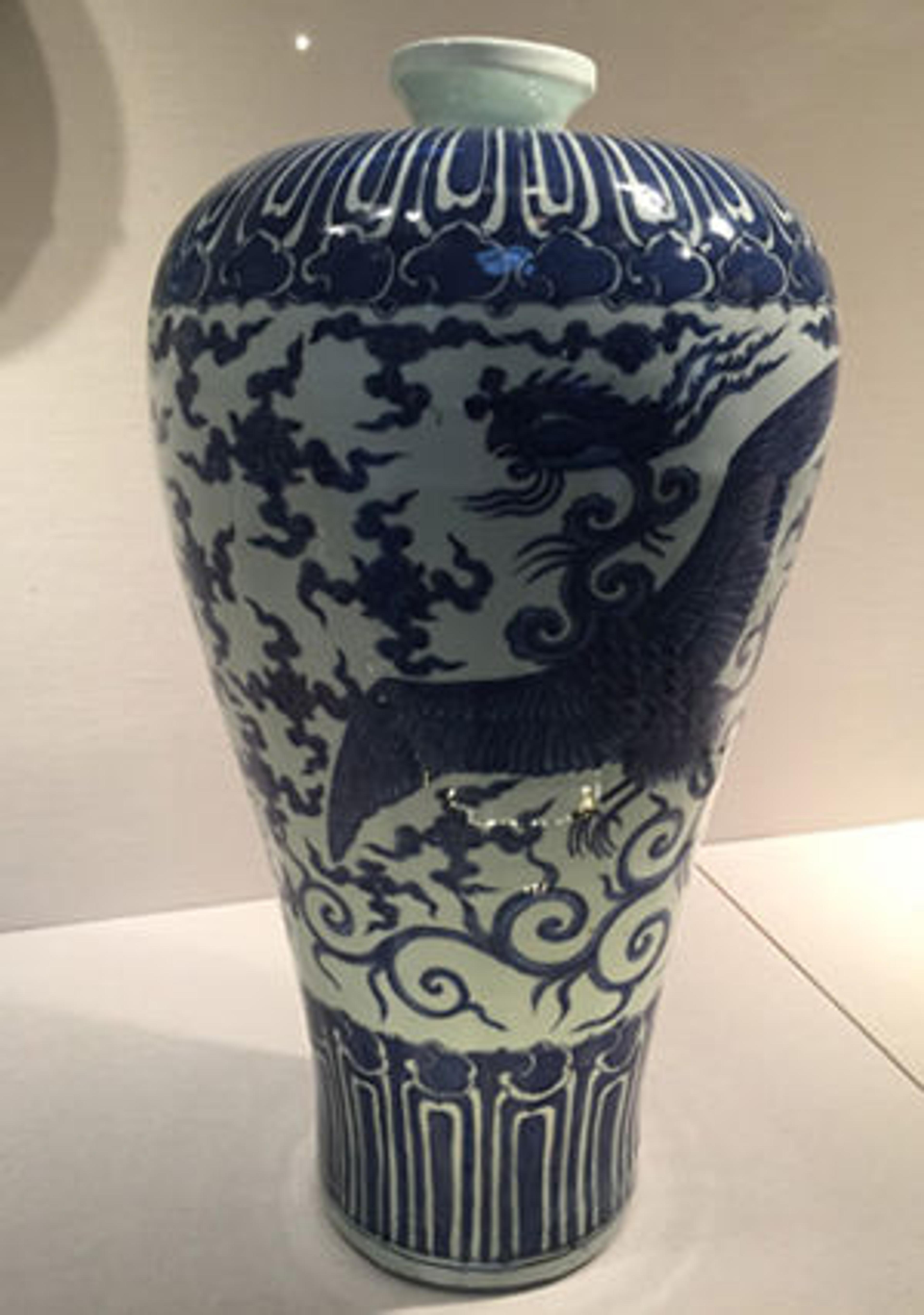
I may be a Chinese kid who was born and raised in Brooklyn, but somehow, deep in the strains of my DNA, I connected to this piece of art. As the son of immigrant parents, one who grew up in a predominantly Irish and Italian neighborhood in Brooklyn, I didn't always want to embrace my Chinese side. I wanted to fit in and be like everyone else. As I've gotten older, though, I've learned to love and appreciate both sides of my identity—the Chinese and the American. As a Chinese-American, there is an overwhelming sense of pride that comes over me as I stare at the detail and beauty of these cobalt-blue designs.
As I continued to walk across the second floor, I saw this stunning Picasso. All these years of living in New York and visiting the Met, and I had never noticed this artwork.
This is Seated Harlequin, painted by Picasso in 1901. This work is from the beginning of his Blue Period, when he started painting social outcasts in haunting images using a primarily blue color palette.
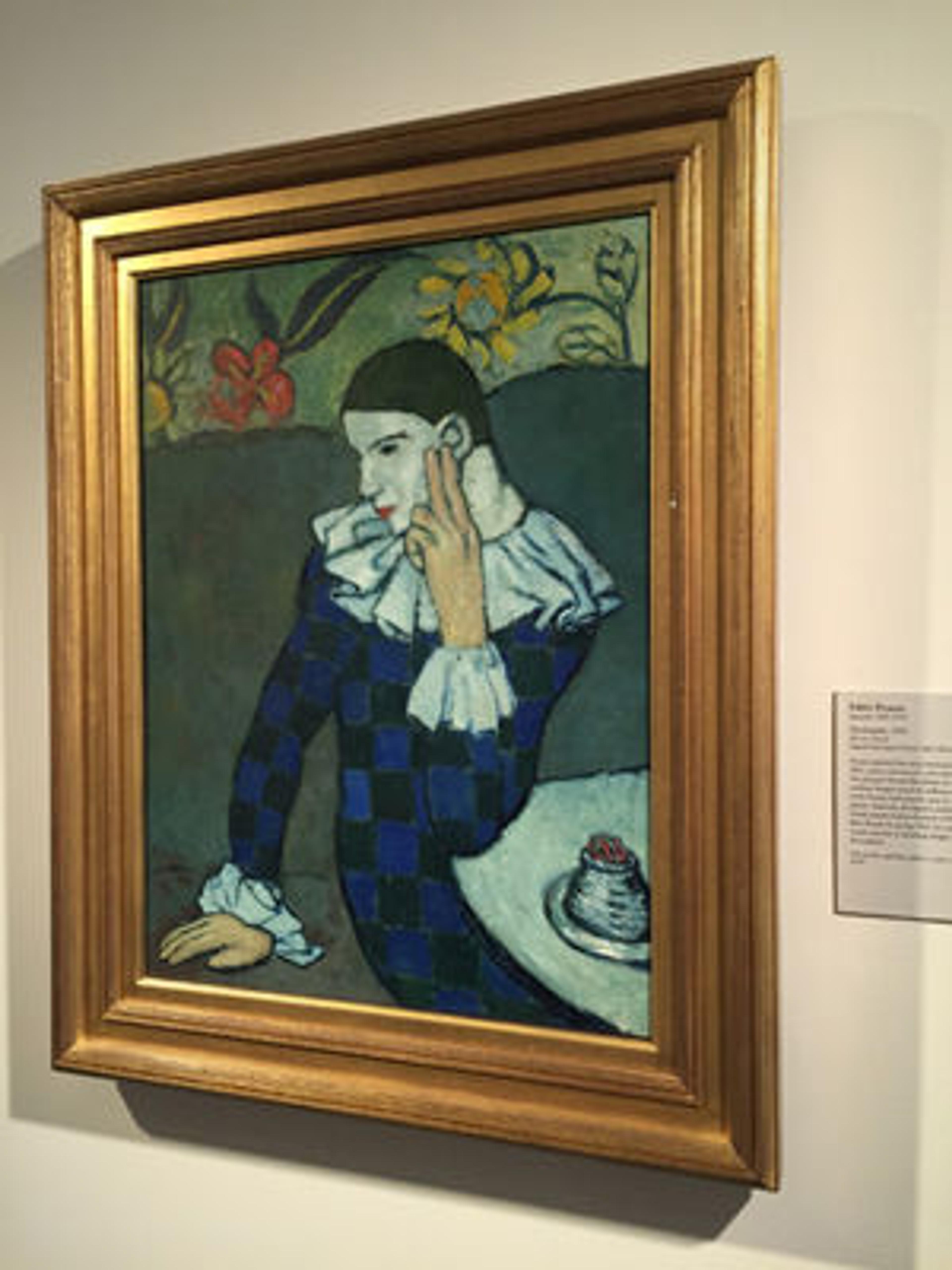
As an entertainer, this painting really spoke to me. There is a sense that actors and entertainers are always expected to be "on." They are the life of the party, and they are always, in some way, playing a role. Clowns are supposed to make us laugh. But here, Picasso shows us a harlequin taking a break from being the performer. He wasn't performing or playing a role, he was just . . . being. Yes, the blue hues and the clown's expression evoke a sense of sadness, but there's also a sense of peace and freedom in this picture because he is at rest and away from the stage.
Next stop: French Impressionism—one of my favorite periods in art history.

Of course, as a Broadway performer (and Stephen Sondheim fanatic), I had to stop by this painting. It is George Seurat's study for A Sunday on La Grande Jatte, which ended up inspiring one of my favorite musicals of all time, Sunday in the Park with George. If you aren't familiar with this musical, be sure to watch a video of the original Broadway production starring Bernadette Peters and Mandy Patinkin. Stephen Sondheim said that he was fascinated by this painting because none of the people in the picture are looking at each other, and he always wondered why that was. He and writer James Lapine wanted to explore these characters through music, but they realized that the most important character in the whole piece was the one not in the painting: George Seurat himself. The musical is about the cost of being an artist and how it can affect our lives for the better as well as for the worse.
I saw the final version of Seurat's masterpiece when I was in Chicago performing Wicked. The Oriental Theater was only blocks away from the Art Institute of Chicago, and I would often go and visit George and his "friends." It is a truly massive painting. If you are ever in that city, you must go and see it, but I love that we New Yorkers have this tiny, developmental version all to ourselves!
I headed back downstairs, where I was transported from France to Italy when I entered the Carroll and Milton Petrie European Sculpture Court.
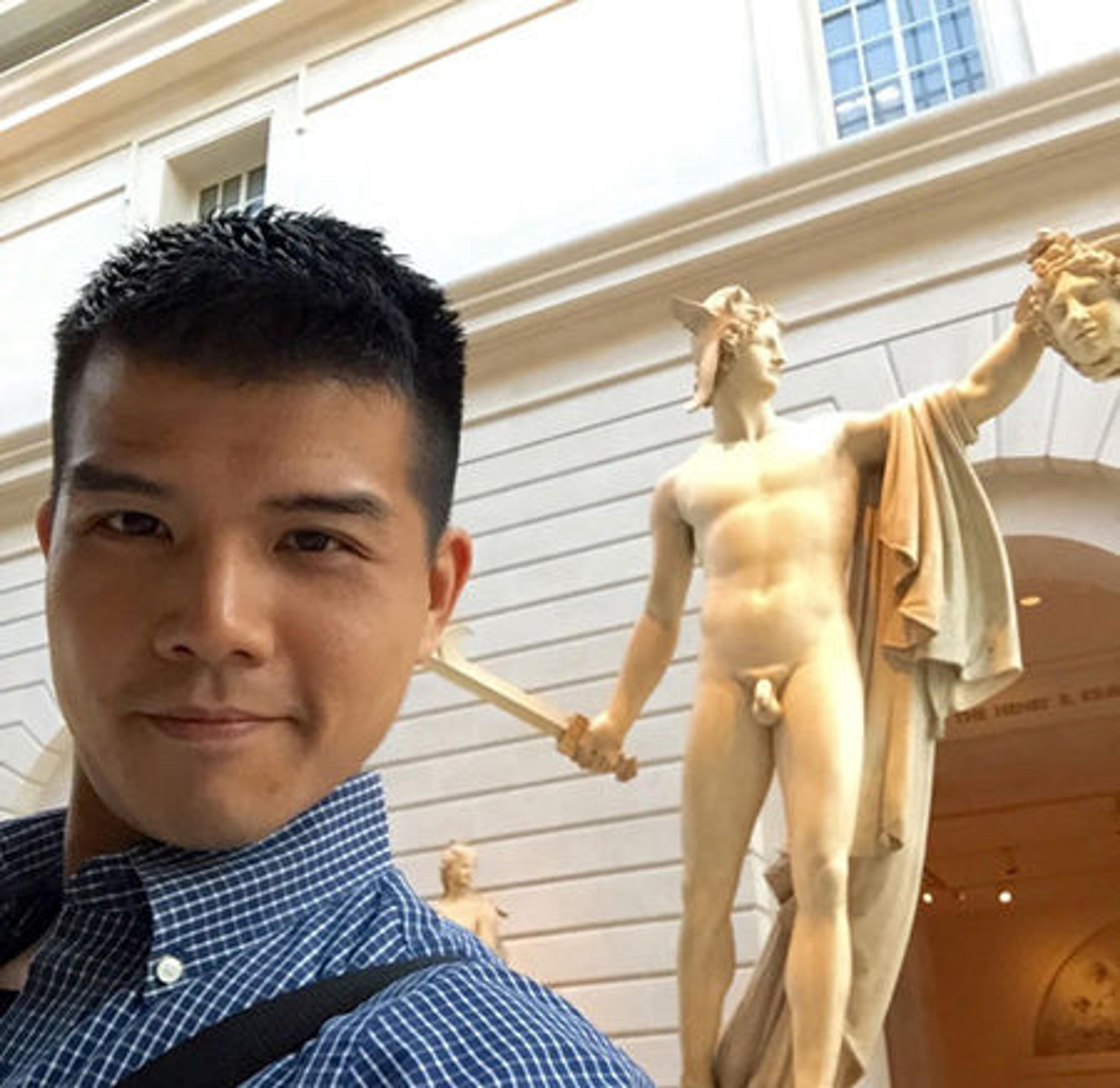
There are so many impressive sculptures here, all beautifully lit with natural light. The one that caught my eye on this trip was Antonio Canova's Perseus with the Head of Medusa. I started to read the description of this piece on the gallery label, and something about it really struck me:
The Gorgon Medusa was feared for her ability to turn living men to stone. Here, Canova inverts this process. Deploying his renowned skill for manipulating the surface of marble, he has turned cold stone into warm flesh.
That last part really spoke to me. Just as a sculptor gives warmth and life to a piece of marble, so do actors to the printed words on the page and singers to the notes and lyrics of the music. Artists of all mediums are connected by this gift (and humbling responsibility) to find "warmth" and humanity, even when times seem dark and hopeless. Yes, life can be hard, people can be cruel, and the world can be a cold and heartless place at times, but it is up to the artist to find the warmth in even the coldest marble, which can then remind the world of our common humanity. Where would the world be without artists to make us laugh, cry, gasp with wonder, and think about the world differently?
This was exactly the inspiration I needed. I left the Museum that afternoon feeling lighter and with a renewed responsibility to turn "cold stone into warm flesh."
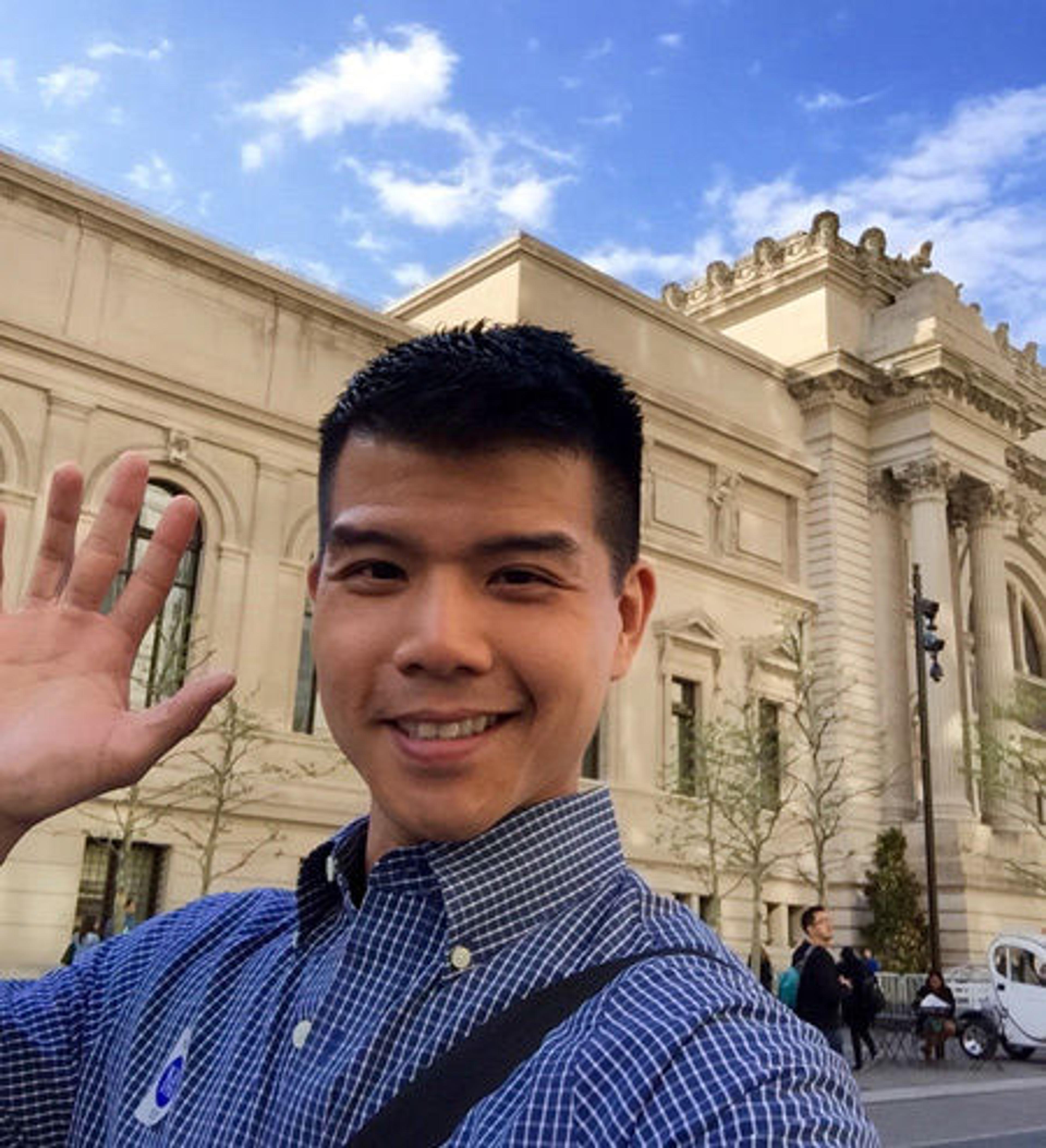
Thank you, Met Museum. I can't wait to come back on May 22 and sing in your hallowed halls!
The Multicultural Audience Development Initiative's Asian-Pacific American Heritage Month Celebration will be held on Friday, May 22, from 6:00 to 7:30 p.m. in the Great Hall and the Grace Rainey Rogers Auditorium. This event is part of MetFridays: New York's Night Out.
Telly Leung
Telly Leung is an actor and singer who has performed on Broadway in Godspell, Rent, and Allegiance, and on television in Glee, Deadbeat, and Law and Order: Criminal Intent. He has performed to sold-out houses across the country, including such venues as Carnegie Hall, the Kennedy Center, and the Hollywood Bowl.